…And To All, A Good Night
Happy Holidays, 2019

Thanks for reading this year. One more post coming for 2019, and then it’s off to the races for (gulp) 2020.
— Greg Goldstein
Greg Goldstein's Comic Art Gallery
Panels and Pages… Art and Artists… Creators and Conventions… Musings and Memories…
Happy Holidays, 2019

Thanks for reading this year. One more post coming for 2019, and then it’s off to the races for (gulp) 2020.
— Greg Goldstein
Star Wars #2, April 2015

Howard Chaykin returns to Star Wars with an imposing cover of Darth Vader in 2015. You don’t want to mess with this version of Vader, even if you’re on his side.
Howard Chaykin. Star Wars. This might be a greater conflict than the empire vs. the rebellion.
I don’t need to repeat Howard’s many on the record comments about his original artwork on the series (Marvel’s 1977 issues #1-#10, which includes the six-part adaptation of the original film.) You can see more for yourself here, here or here.
Suffice to say, he doesn’t like it. (Reading anything Howard says about his own work — or others, or anything, for that matter — is always highly entertaining, so I recommend taking a deeper dive.)
Objectively, Star Wars is of course, not his best work — not even close. It’s not even as good as his other early comics. He drew three issues (and wrote one) of Marvel Premiere just prior to Star Wars that are excellent, especially for the period. (Howard is generally self-critical of all his earliest work, so I bet he won’t agree. But I digress.)
Licensed comics are always a challenge, especially with limited reference and insane deadlines. That said, given these constraints, and many others, I think his Star Wars art, especially on the first issue, is definitely better than much of what was coming from the big two companies at the time. But, ultimately, not so great on the Chaykin Curve. (A new scientific term coined especially for this post.)
Just a few years later (1982) he created the astonishing American Flagg. Groundbreaking, although often overused, barely does that series justice. (Much more on that in a future post). Based on Flagg alone, Mark Chiarello DC’s long-time Art Director has described Chaykin as one of the architects of the modern comic book.
Unfortunately, Flagg was published by a smallish independent publisher, which means that few casual readers ever saw it. Although knowledgeable long-time fans are well aware of the series, it doesn’t have the legacy it deserves.
Star Wars? Reprinted about a zillion times, in more formats than I can count. And I am one of the guilty parties here, publishing the Star Wars Artifact Edition (IDW), showcasing the original art — in its original (11×17) size.
Shortly after Flagg, Chaykin went on to other fascinating projects, geared for older readers. Times Squared. Blackhawk. The Shadow. Black Kiss. Etc. Ultimately, after a long stint in Television, he returned with other series that reflected his interests and passions. Mighty Love (feels like a television show and was apparently originally developed for that medium) and City of Tomorrow are two personal favorites. He’s currently working on Hey Kids! Comics!, a fascinating fictionalized look at the drama, jealousy and scandals in the history of comic book business itself.
His innovative and realistic storytelling is complex, violent, sexual, and political. He left space operas behind a lifetime ago.
So if you were a kid when you saw Star Wars, loved Star Wars, and only had the Star Wars comics to read over and over again, because there was no home video, I get it, you love those comics.
I think that’s cool. Even Howard is probably ok with you remembering those comics through the warm glow of childhood nostalgia.
But if you’re an adult? Just don’t remember HIM for them.
That’s like remembering Nolan Ryan only for his one World Series appearance for the 1969 “Amazing” Mets. You’ve missed the point.

Pencil Commission, Undated (Inks, 2019)
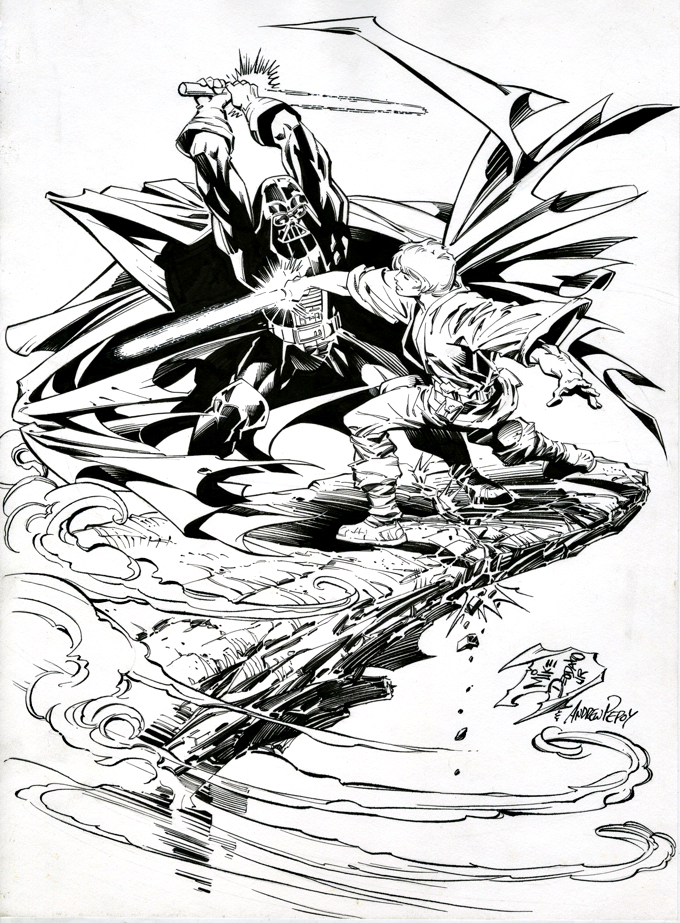
Continuing our countdown to Star Wars:The Rise of Skywalker, opening December 20, and concluding, apparently, the Skywalker saga.
I discovered this dynamic undated commission by Mike Deodato a few months ago. Something about it — the composition, Luke’s face, the overall “loose” style — reminded me of Carmine Infantino’s enjoyable run on the original Marvel series 40 years ago.
When I acquired the piece at NYCC, it was pencils only, and although it looked great, my gut told me to get it inked. (Sadly, my guts often have opinion.)
Fortunately, my pal Andrew Pepoy, the talented inker, happened to be nearby. Turns out, he always wanted to ink the late Infantino, and well, maybe this is the next best thing…
He nailed it — keeping the looseness intact, while adding polish and more depth to make it pop. (Look at Luke’s Lightsaber against Vader’s cape for instance.) This is especially impressive because the pencils were created on an odd thin paper stock, nothing like the more typical Bristol board artists employ. Definitely not an easy task.
Carmine’s run comes during the period leading up to to Empire Strikes Back, and I’m sure Lucasfilm was giving Marvel and writer Archie Goodwin fits, keeping them from, well, just about any story element that would spoil the film. Which is… well…. just about everything. Nerveless, they manage to have a few confrontations between Luke and Vader. Even if, of course, nothing is what it seems.
As for this Deodato piece? Mike’s modern Star Wars (see below) art looks nothing like this commission — someday I hope to get the backstory on the art. Until then… stay tuned.
Teenage Mutant Ninja Turtles #1, 30th Anniversary Reprint, July 2014 (SDCC)

Continuing a celebration of the TMNT 35th anniversary, with a look back at the 30th.
One Minute Later. 30 Seconds Later. 10 Seconds Later. It doesn’t really matter. If a comic book cover is a snapshot of a moment of time, the idea here was to illustrate what the characters on an iconic cover would be doing just after that moment. Kevin and I spitballed this idea for a few minutes and he ran with it. If the Turtles were ready for action on the original cover, they would be jumping into action a moment later.
They are, after all, the Turtles.
IDW offered two versions of the comic book at SDCC that year. A color version that was penciled by Kevin and inked separately by co-creator Peter Laird on a lightbox copy. (Look carefully to see some subtle but interesting differences.) The second version, more limited, is this one, featuring Kevin’s tight pencils only and printed in black and white. I might be biased, but I think it’s a beauty.
For a look at the all the versions and re-do’s of the original cover, check out this great article. Ironically it omits this specific cover, but hopefully catches all the rest.


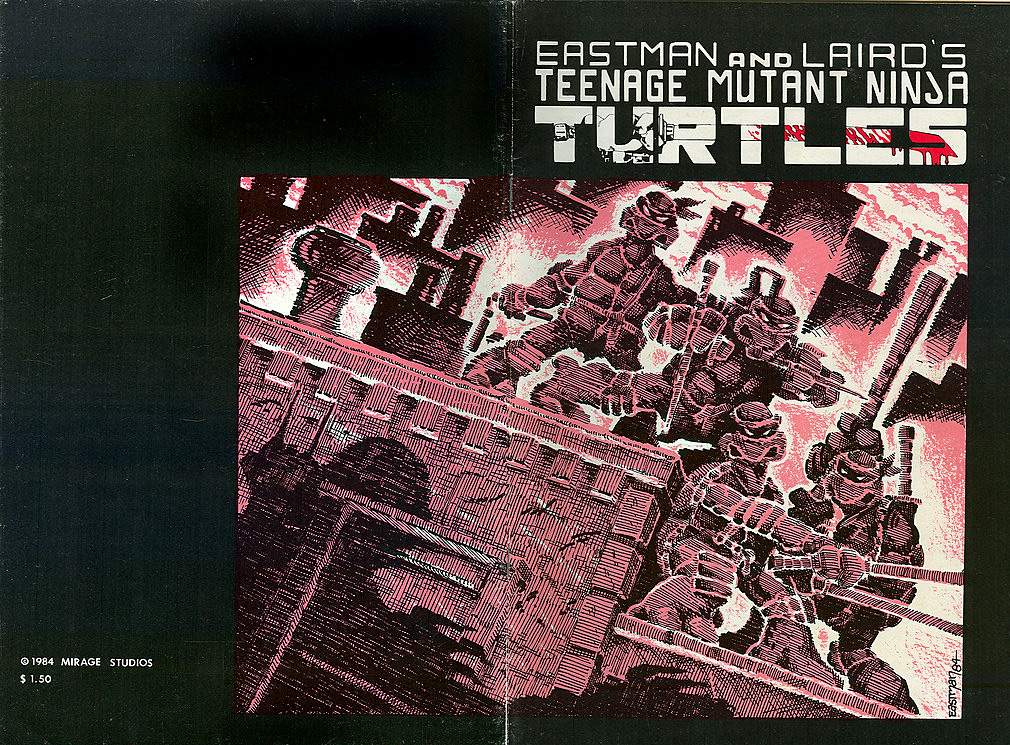
Bram Stoker’s Dracula, #3, December 1992

Happy Halloween! Today we wrap up our two-week series celebrating the best in monsters, mystery and mayhem.
Here’s a sweet page from Roy Thomas and Mike Mignola’s adaption of Francis Ford Coppola’s 1992 film, Bram Stoker’s Dracula.
Fun Fact: All the pages in this adaption are “sweet.” There’s not a miss in the bunch. In fact it’s one of the best looking of any film adaptations ever done in comics. (Top of mind, only Archie Goodwin and Walter Simonson’s Alien graphic novel is in the same league.)
It’s also fair to say that while the film itself is fine (mixed reviews when it was released), the comics adaption itself is actually better.
Fun Fact: Coppola liked Mike’s art so much he hired him to provide illustrative material for the film itself, and Mike’s work is credited in the movie.
Fun Fact: The title was the launch project for Topps Comics, and was in development prior to the hiring of an actual Editor-In- Chief. (Jim Salicrup.)
Fun Fact: John Nyberg inked the series in spectacular fashion— it’s astonishing how anyone but Mike could make it so “Mignola-like,” but John nails it. The brilliantly effective coloring is by Mark Chiarello, who later colors the first full Hellboy series, Seed of Destruction. (Hellboy himself appears for the first time just a few months after Dracula concludes in an SDCC giveaway comic book.)
Fun Fact: For many years, Dracula was a lost classic — one of the few major Mignola projects not in print — for more than 20 years. I personally chased those reprint rights for 10 of those 20. Sometimes, insane tenacity pays off.
Fun Fact: It’s the first comic book I ever worked on professionally, and its reprint was one of the final projects published prior to my departure from IDW. (I will have to figure out a way to bring another version to my next publishing home. Ha.)
Fun Fact: Despite one of the best looking comic book series ever, it’s unlikely there will ever be an “artists edition” style book. The originals are scattered to the wind, and only occasionally offered for sale. I consider myself fortunate to own this one.


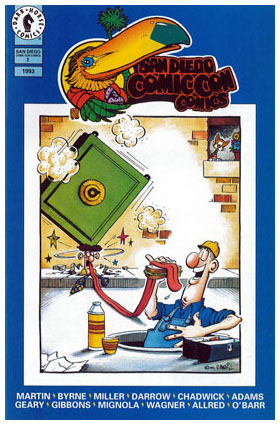


Baltimore Comic-Con, October, 18-20, 2019



Green Arrow #7, February 2011
Green Arrow is back on the air (CW) for its eighth and final season, so before the emerald archer fades into the TV sunset, we’re focusing a few posts on Green Arrow originals.
Here’s a great panel page example by the phenomenal Mike Mayhew.
Mike’s earliest regular work was at Topps, excelling at dynamic storytelling on Zorro (yes, Zorro) in the traditional pen and ink medium. After the comic book implosion of the mid- 90’s left many talented artists out of a job, Mike tried his hand at painting for a book cover assignment. The result? Mike quickly transformed from talented story artist to a premier cover painter.
These days, Mike’ schedule only occasionally allows for fully illustrated interior stories. Here he demonstrates his tonal skills on Green Arrow — creating a lush, haunting page. (GA is dealing with the apparent ghost of his dead mother, hence the haunting.)
When Mike introduces me to a third party, he often says I was his “first boss.” Technically, that would have been Jim Salicrup, who edited Topps comics during its brief heyday, from 1992-97. But I was the Director of Publishing… so why quibble? Mike’s a great talent and a friend. I’ll take it.
New York Comic Con Con, Javits Convention Center, October 3-6, 2019
Our final batch of photos can be found here, along with the three previous installments. A few highlights below:
See you in Baltimore next week!
New York Comic Con, October 3-6, 2019
More than 50 new photos added to the Conventions: NYCC page; Check them out here. A few highlights below:





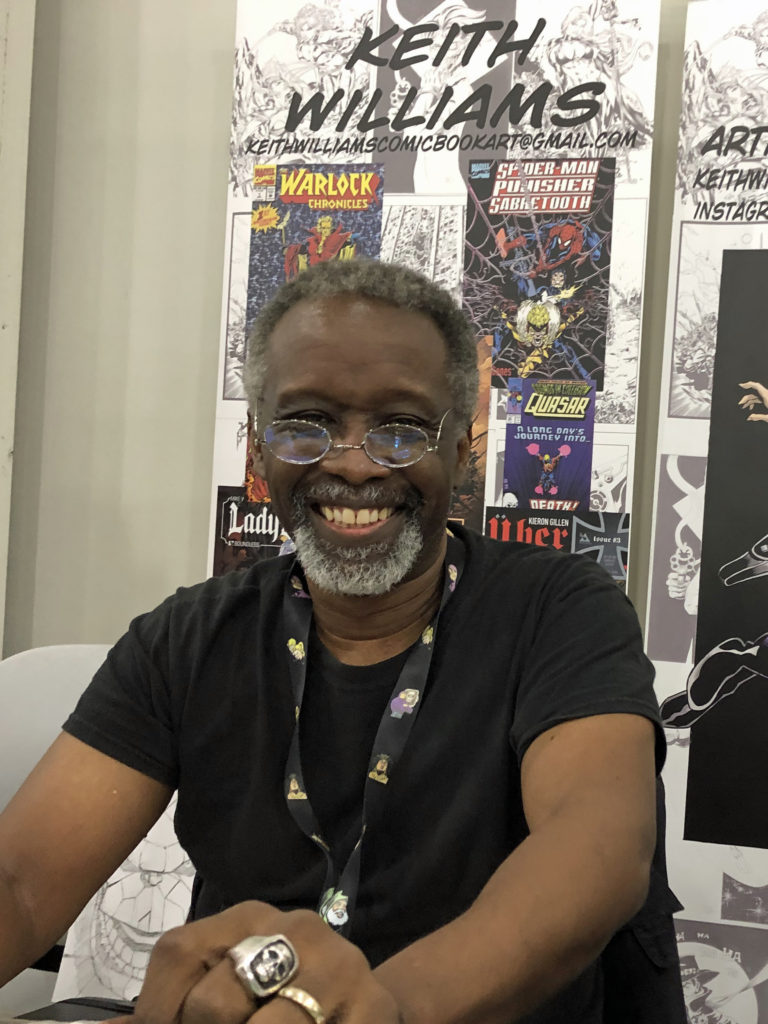
T.H.U.N.D.E.R. Agents 50th Anniversary Special (IDW), July 2015
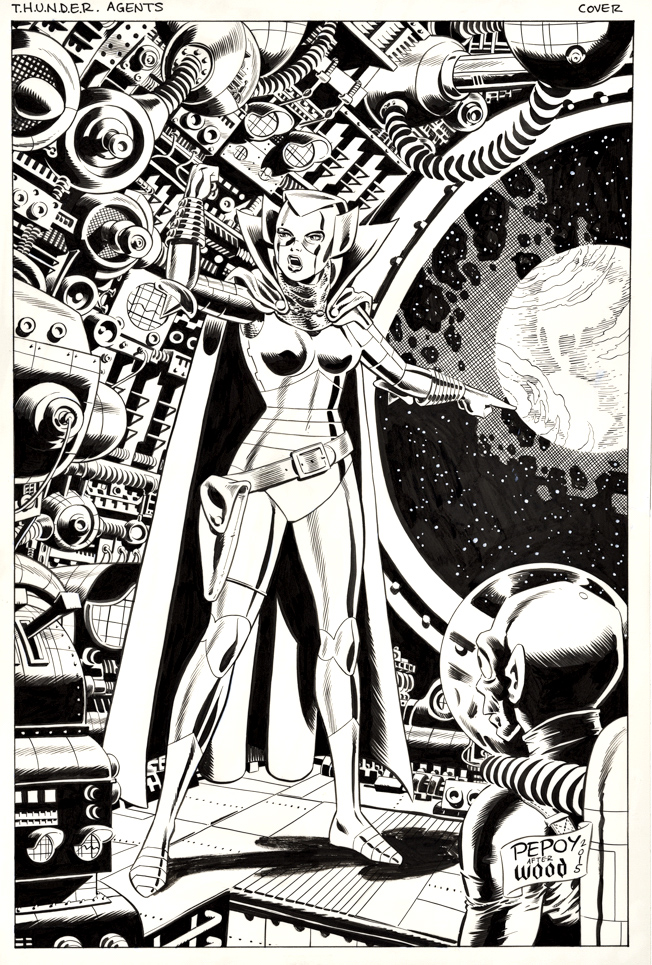
No one today pulls off a tribute to the great Wally Wood quite like the very talented Andrew Pepoy.
To celebrate the 50th Anniversary of the T.H.U.N.D.E.R Agents, IDW Publishing asked Andrew to illustrate a cover variant – an homage to the iconic Wood EC cover, Incredible Science Fiction #29. For our version, we substituted Wood’s astronaut with the sexy and villainous Iron Maiden, one of the main adversaries in Wood’s original T.H.U.N.D.E.R Agents.
The detail is terrific (especially noticeable in its original B&W form), and while no one can actually replicate Wally Wood, this might be as close as it gets. Home run!